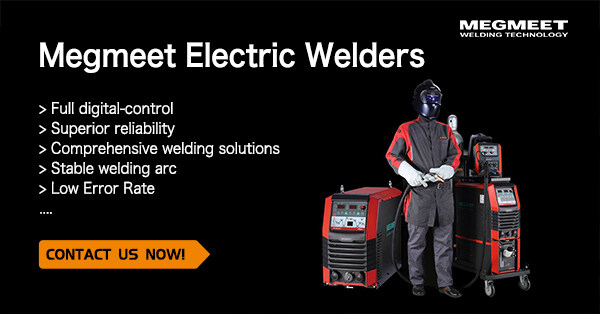▏“The simplest things are often the truest.” — Richard Bach
Simplicity is not the absence of complexity, but the distillation of it. Nowhere is this clearer than in the evolution of welding technology. Once reserved for seasoned artisans fluent in volts, amps, and metallurgy, welding has increasingly opened its doors to newcomers through the innovation of easy-to-use welding machines. These machines strip away unnecessary complications without sacrificing performance, embodying the principle that the best tools serve the craftsman rather than confound him.
Today, the pursuit of the easy welding machine has become a central theme in both industrial manufacturing and the do-it-yourself movement. Engineers and manufacturers understand that the future of the trade hinges on tools that blend precision, safety, and intuitive operation. The easiest welding machine to use is no longer a compromise for beginners—it’s often a powerful instrument in skilled hands, streamlining repetitive tasks and reducing fatigue on the job.
I. Why “Easy” Matters More Than Ever
Historically, welding demanded deep technical knowledge. Older machines lacked automated controls, required constant parameter adjustments, and punished even minor mistakes with spatter, poor penetration, or structural defects. A welder’s skill was measured not only by steady hands and sharp eyes but also by an intimate familiarity with their equipment’s quirks.
But the welding landscape has changed dramatically. Across industries—from aerospace to automotive, shipbuilding to custom fabrication—there’s a growing need for versatile workers who can pick up new equipment quickly. Training budgets are tighter, production schedules shorter, and safety standards higher. In this environment, the easy to use welder has become an asset, not merely a convenience.
Even seasoned professionals appreciate an easy welding machine that minimizes fatigue during long shifts or tight-deadline projects. After all, the less time spent fighting a machine’s interface, the more time and mental energy can be devoted to producing flawless welds.
II. Features Defining the Easiest Welding Machine to Use
An “easy-use welder” does more than reduce buttons on a panel. Let’s look beneath the casing:
1) Synergic Controls and Smart Technology:
Modern easy to use welders often employ synergic or “one-knob” controls. For processes like MIG welding, this means adjusting a single parameter—wire speed, for instance—while the machine automatically calibrates voltage and arc characteristics. This technology eliminates guesswork and produces consistently high-quality welds, even for those with minimal experience.
Some advanced, easy welding machines incorporate microprocessor controls and memory settings. A welder can store programs for specific materials and thicknesses, ensuring repeatability and efficiency from one job to the next.
2) Digital Displays and User Interfaces:
Gone are the days of cryptic dials and ambiguous indicators. The easiest welding machines to use feature high-contrast digital screens displaying exact voltage, amperage, and wire speed values. Graphics guide users through setup, warning of improper configurations or overheating risks.
3) Portability and Compact Design:
Weight and form factor are critical. An easy welding machine may weigh as little as 10–15 kg, allowing it to be carried to rooftop repairs, fieldwork, or cramped factory spaces. Compact inverter-based designs have replaced bulky transformer models, delivering high power output in small packages.
4) Automatic Safety Mechanisms:
A truly easy to use welder protects both the user and the machine. Integrated features such as thermal overload shutdown, automatic fan control, and voltage fluctuation management enhance reliability and extend equipment life.
5) Multi-Process Versatility:
The definition of “easy to use welding machines” has broadened to include multi-process capabilities. The same machine might handle MIG, TIG, Stick (MMA), and even flux-cored welding. For shops with varied tasks, investing in one easy to use welder capable of multiple processes saves money, space, and training time.
III. How to Choose a Simple Welding Machine?
Many professionals and hobbyists wonder how to choose a simple welding machine. The answer depends on several key factors:
Project Scope and Material Thickness: A light-duty easy use welder (e.g., 120A–180A) suffices for automotive bodywork, fences, and thin sheet metal. For structural steel or heavy fabrication, look for higher amperage capacity, deeper penetration, and robust duty cycles.
Input Power: Some of the easiest welding machines to use run on standard 120V household current, perfect for garages or small workshops. However, demanding jobs may require a 240V input for adequate power and stability.
Process Preference: MIG is generally regarded as the easiest process for beginners, thanks to its “point-and-shoot” simplicity and minimal cleanup. Yet for fine work on stainless steel or aluminum, a user-friendly TIG welder might be the right choice, even though TIG generally requires more skill.
Duty Cycle: Duty cycle describes how long a welder can operate continuously before needing to cool down. An easy to use welding machine with a higher duty cycle is essential for production environments or long weld seams.
Support and Warranty: Consider after-sales support, availability of consumables, and local service centers. The best easy to use welders come from reputable brands that provide comprehensive manuals, training videos, and troubleshooting assistance.

IV. Industry Trends Driving the Demand for Easy Use Welders
Several forces drive the development of easy to use welding machines:
Labor Shortages: Many industries face a shortage of skilled welders as older tradespeople retire. Easy welding machines help bridge the skills gap, allowing less-experienced workers to contribute effectively.
Automation Integration: Even in automated settings, human operators still oversee robotic welders and perform touch-up work. Machines that are easy to program and adjust keep production flowing.
Home Fabrication Boom: The pandemic years fueled interest in DIY projects, automotive restorations, and metal art. Sales of the easiest welding machines to use have soared, with brands marketing compact, plug-and-play models for hobbyists.
Safety and Compliance: Strict safety regulations push manufacturers to design machines that reduce operator error, incorporate diagnostics, and alert users to unsafe conditions.
V. Beyond the Machine: The Philosophy of Simple Tools
There’s an old truth in craftsmanship: the best tool becomes an extension of the hand and the mind. Easy to use welding machines aren’t just about comfort; they’re about unlocking creativity and confidence. They enable new welders to step into the trade with less fear and empower experienced welders to achieve precision faster and with less fatigue.
Whether a machine sits in a vast fabrication plant or a hobbyist’s garage, the principle remains the same: a welder’s time should be spent creating strong, clean welds—not wrestling with complicated settings or subpar equipment.
▏“Simplicity is the ultimate sophistication.” — Leonardo da Vinci
In the sparks that fly from an easy to use welder, we see the culmination of centuries of metalworking wisdom distilled into accessible technology. Simplicity, once a luxury in welding, has become its highest form of sophistication—a reminder that even in an age of digital controls and microprocessors, the soul of welding remains unchanged: fusing metal, forging bonds, and shaping the world one bead at a time.
Related articles:
1. Heavy-Duty Welder Brings Greater Productivity
2. Increase Productivity with Automatic TIG Welding Machines
3. Improve Shipyard Welding Efficiency with Megmeet Artsen CM500C Welders
4. How to Improve Robotic Welding Performance?
5. How to Improve Your Stick Welding Technique?
6. How Advanced Welding Technology Turns Costs into Profits?




